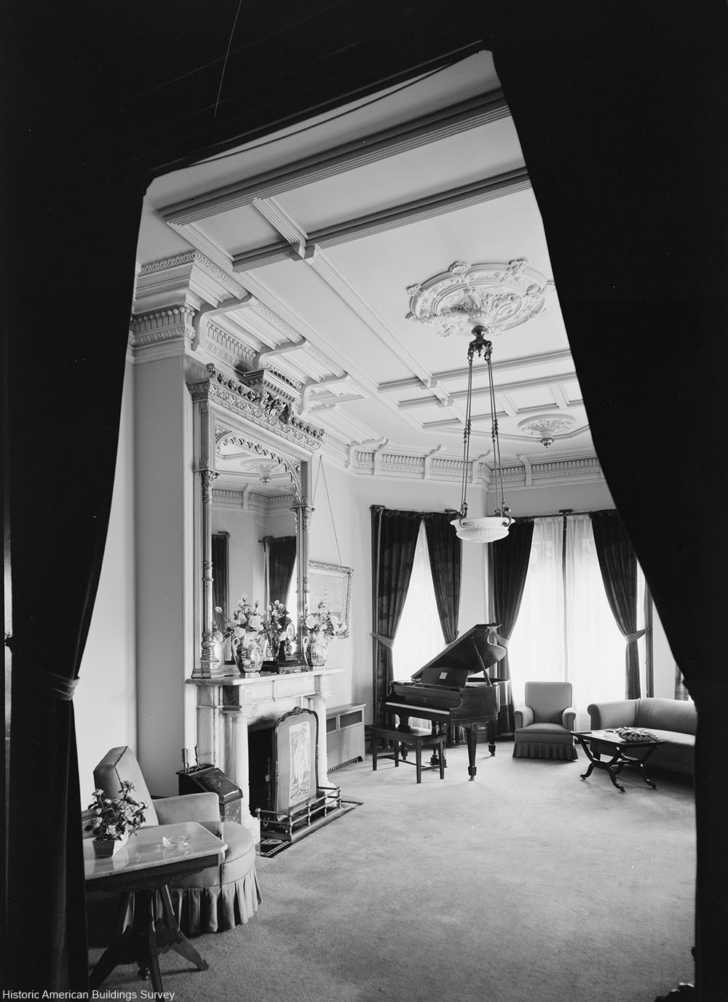Nestled in the heart of Eureka, California, the Carson Mansion stands as an awe-inspiring testament to the opulence and grandeur of American Queen Anne-style architecture. Built in the late 19th century for lumber magnate William Carson, this iconic mansion has captured the imaginations of architectural enthusiasts for generations.
With its elaborate detailing, picturesque turrets, and ornate woodwork, the Carson Mansion is an embodiment of the wealth and prosperity that once thrived in Northern California. In this article, we delve into the fascinating history and exquisite features of the Carson Mansion, unraveling the allure of this remarkable piece of architectural heritage.
The Lumber Baron’s Dream
Constructed between 1884 and 1885, the Carson Mansion was the brainchild of William Carson, a prominent figure in California’s lumber industry. Eager to showcase his success and fortune, Carson commissioned the renowned architect Samuel Newsom to design his opulent residence. Newsom’s vision came to life, resulting in a breathtaking mansion that transcended the boundaries of traditional architecture, and it became a prime example of the Queen Anne style.
An Architectural Marvel

The Carson Mansion’s architectural brilliance lies in its meticulous attention to detail. Adorned with delicate gingerbread trim and vibrant colors, the exterior dazzles onlookers with its whimsical and ornate aesthetics. Asymmetrical facades, picturesque gables, and an array of textures create a harmonious composition that catches the eye from every angle.
Step inside, and the mansion continues to mesmerize. Intricate woodwork, elegant stained glass windows, and elaborate carvings elevate the interior to an unparalleled level of luxury. Each room showcases the finest craftsmanship of the era, boasting original fixtures that have stood the test of time.
Historical Significance
The Carson Mansion’s historical significance extends beyond its architectural prowess. It bears witness to the economic boom fueled by the lumber industry during the late 19th century. William Carson, as one of the wealthiest men of his time, was a driving force behind the development of Northern California. The mansion’s legacy speaks to the opulence and prosperity that thrived in the region during this period.
Evolution of Ownership

Following William Carson’s passing in 1912, the mansion went through various ownership changes. It served as a private club, a military officer’s club during World War II, and later became the distinguished Ingomar Club, a private social hub that preserved the mansion’s grandeur while making it an integral part of the community.
Preserving the Icon
Listed on the National Register of Historic Places since 1971, the Carson Mansion remains a treasured landmark, capturing the essence of Victorian splendor for generations to come. While the mansion is not open for regular public tours, its architectural significance has made it a subject of admiration for photographers, artists, and architectural enthusiasts.
Conclusion
The Carson Mansion’s magnificence transcends time, standing as a symbol of architectural brilliance and the golden age of the lumber industry. A true marvel of Victorian splendor, this iconic mansion continues to inspire awe and admiration for its intricate design and historical significance. The Carson Mansion remains an enduring symbol of the rich heritage and grandeur that once defined Northern California









